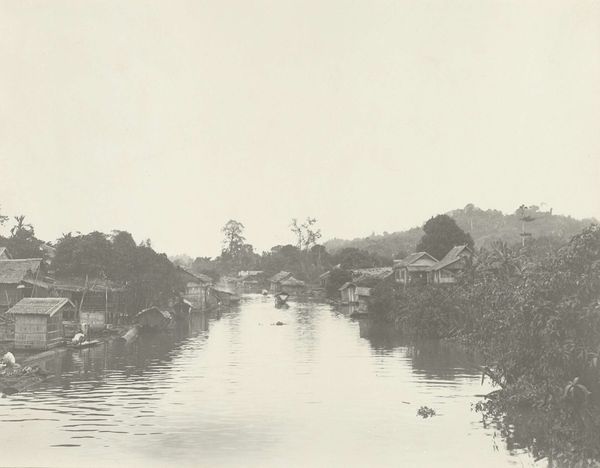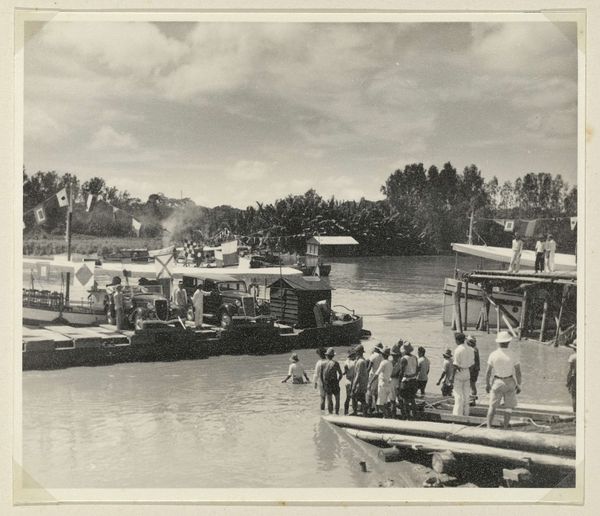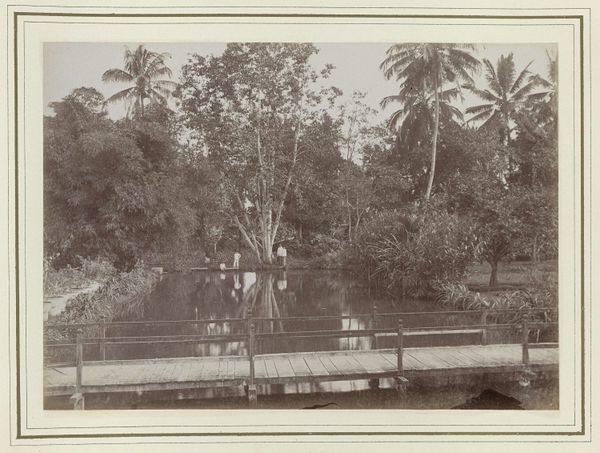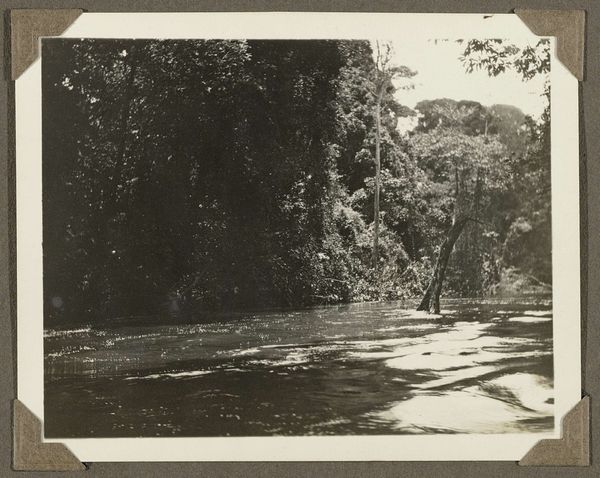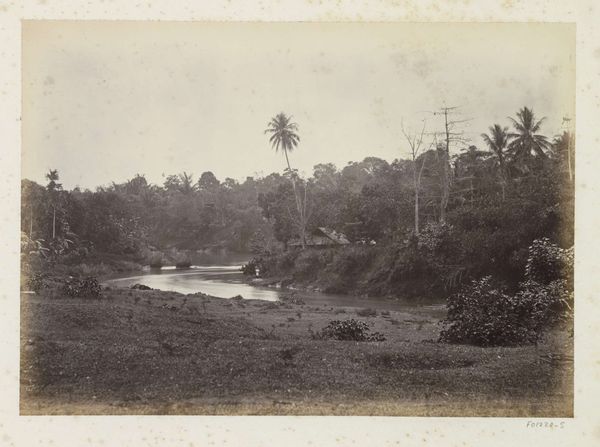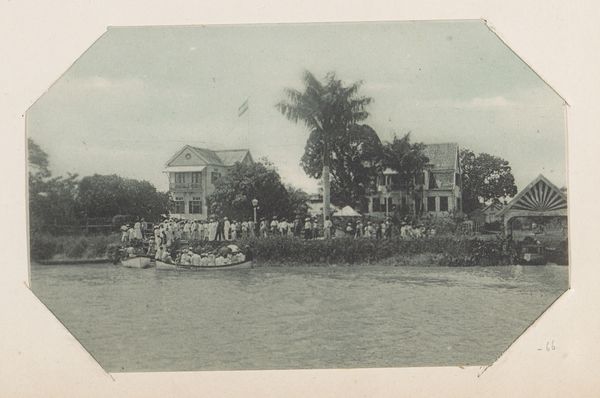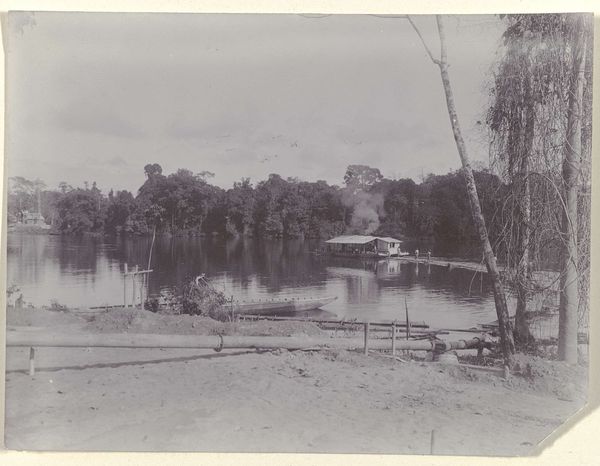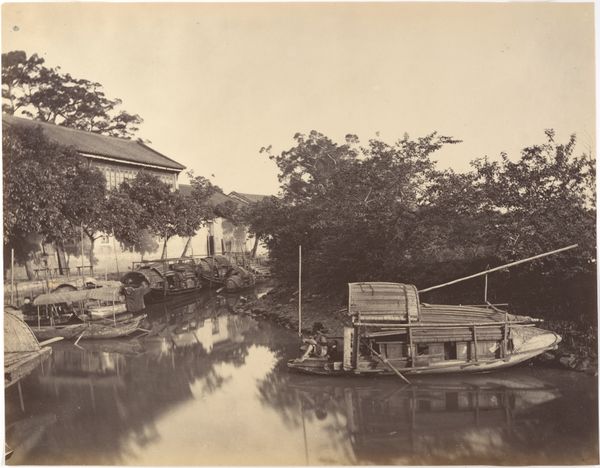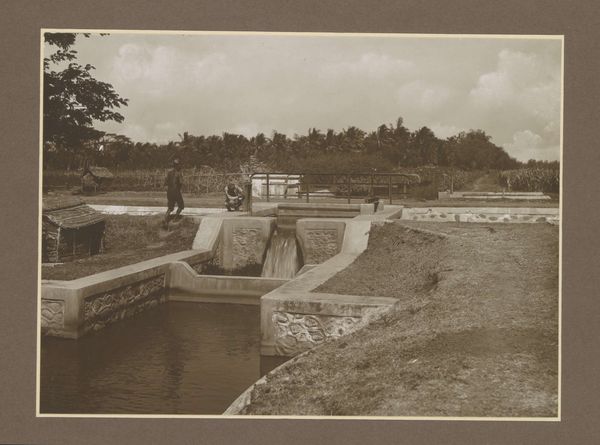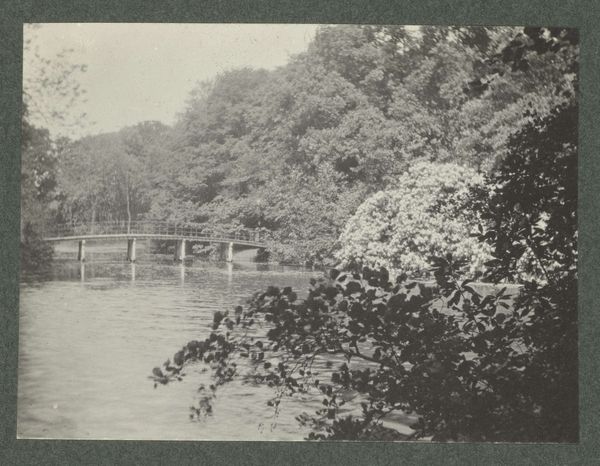
Activiteit op een rivier in Indonesië met vlotten en wassende mensen. 1900 - 1915
0:00
0:00
print, photography, gelatin-silver-print
# print
#
landscape
#
indigenism
#
photography
#
gelatin-silver-print
#
monochrome photography
#
genre-painting
Dimensions: height 174 mm, width 237 mm
Copyright: Rijks Museum: Open Domain
Curator: Looking at this gelatin-silver print from the early 20th century, taken somewhere between 1900 and 1915, we see "Activity on a River in Indonesia with Rafts and Washing People" by Johanna Hermina Marmelstein. It's a compelling genre scene. What's your immediate response to it? Editor: A world captured in shades of gray—literally, of course. The repetition of labor near the river is almost rhythmic; all those bodies bent, all that cloth spread to dry. There's a visual hum here, a subtle drone of activity. Curator: Indeed, it speaks to the social function of communal spaces and the gendering of labour. The image is fascinating in its depiction of everyday life, perhaps romanticizing it even, under colonial influence and the production of Indigenism as a popular style. Editor: The river itself feels almost like a symbolic vein, doesn't it? It courses through the landscape but it's also the lifeblood of this community, sustaining it, purifying it, acting as both a thoroughfare and a meeting place. I wonder about water and memory in this context. Curator: I would argue, based on its context of production, that its anthropological gaze freezes a particular moment in time. By focusing on this specific location, framing it for consumption in the West, Marmelstein contributes to a vision of a distant, perhaps "exotic", place frozen in time. Editor: Yes, and that "exoticism" itself becomes a loaded symbol. This vision is both seductive and fraught; idyllic yet inherently marked by power dynamics of representation and the cultural narrative around landscape and the other. Curator: Exactly, it showcases an era where photographic images like this reinforced preconceived notions and sustained unequal relationships across cultural and geographic boundaries, which unfortunately still persist. Editor: I still find myself drawn to the symbolic endurance represented in these repeating, everyday scenes though. While images like these are easily deconstructed, a residue of cultural continuity still exists. Curator: Yes, it's precisely the tension between the artistic intention, its role in cultural power structures, and the enduring power of human symbol that makes such an image so thought-provoking, even today. Editor: Definitely food for thought on how we represent and interpret shared history through the lens, literally and figuratively.
Comments
No comments
Be the first to comment and join the conversation on the ultimate creative platform.

